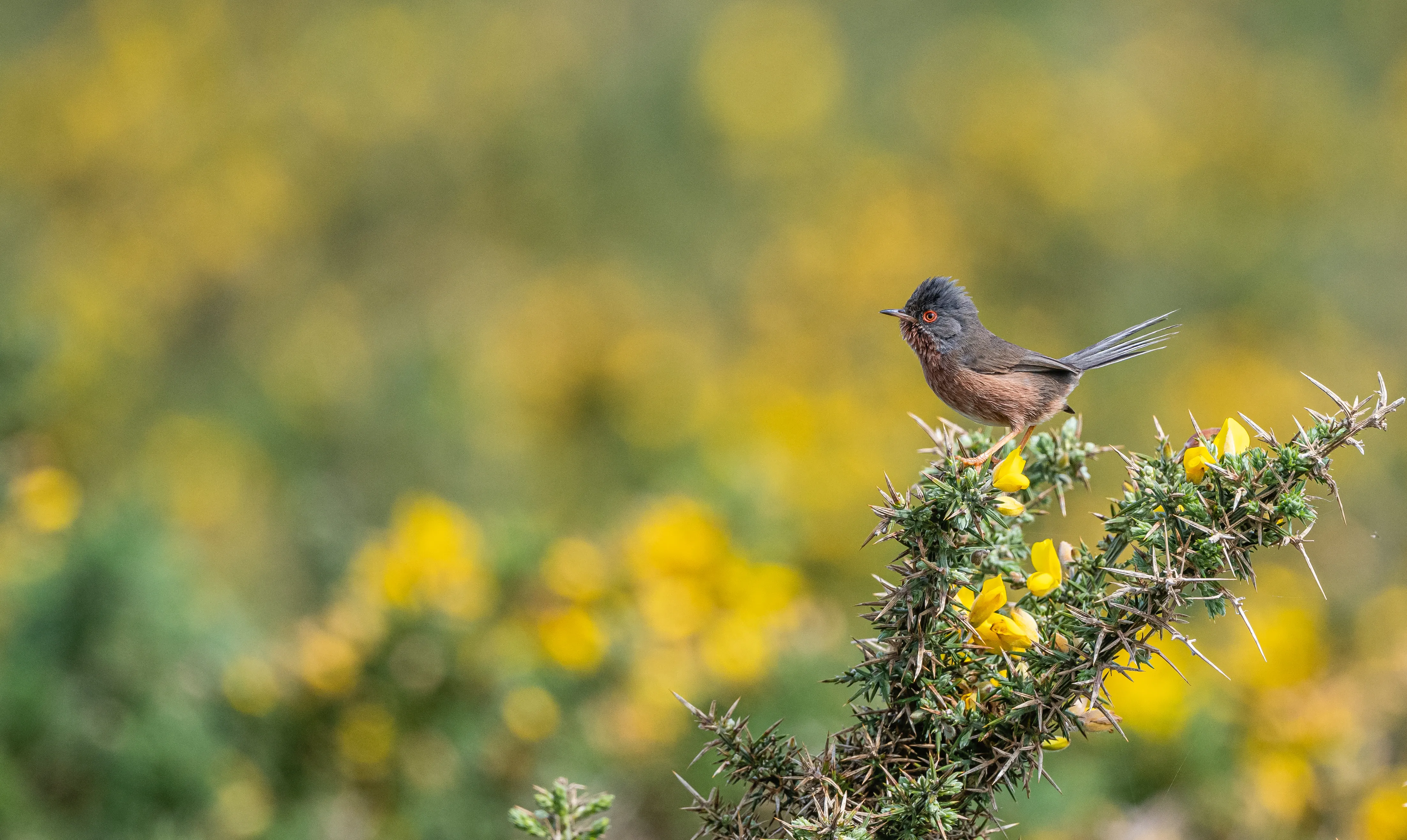The UK’s heathlands are incredibly special places. These, and other similar open habitats, support a wide variety of rare plants, insects, birds, and animals. Now, for the first time in two decades, the British Trust for Ornithology (BTO) is asking UK birdwatchers to help survey these extraordinary landscapes.

Heathlands are characterised by sparse open vegetation, with low-growing plants such as heather, gorse and bracken, with scattered trees. These and similar habitats, such as clear-cut areas in commercial forests, moorlands, and coastal scrub, will be included in the survey, as they are also home to a similar selection of key species.
The main focus of the survey, which is being launched in January 2025, in partnership with the RSPB, and funded by Natural England, is to determine the current status of three scarce birds across the UK and Channel Islands: Woodlark, Nightjar and Dartford Warbler. It will also record a number of other important heathland bird species such as Hobby, Grasshopper Warbler, Cuckoo, Curlew and Stonechat.
The previous population estimates made for Woodlark, Nightjar and Dartford Warbler are now almost 20 years old, based on data from surveys undertaken at a time during which all three species had undergone a substantial increase, in both population size and distribution. At that time, both Woodlark and Dartford Warbler were at their most northerly recorded UK breeding ranges, while Nightjar was regaining ground in northern England and even into Scotland.
It is hoped that the new survey will indicate how these birds are faring and where we may need to look at habitat protection to safeguard potential future expansion in range and population.
- Nightjar - a nocturnal bird which migrates to breed in the UK from tropical Africa, the Nightjar’s eerie churring song is a distinctive sound of summer heathlands.
- Woodlark - less familiar to most people than its relative the Skylark, this delightful songbird prefers lightly wooded heaths and adjacent farmland.
- Dartford Warbler - these characterful small birds can be found in selected areas in southern and eastern England, southern Wales, and the Channel Islands.
All three species are highly reliant on protected sites, including Sites of Special Scientific Interest (SSSIs) and Special Protection Areas (SPAs), which can be vulnerable to habitat change and damage, such as that caused by fires and extreme weather events.
David Norfolk, Senior Research Officer with BTO, says “Given the large proportion of Nightjar, Dartford Warbler and Woodlark populations that depend upon protected habitats, it is vital that we have updated population estimates to ensure that these important sites are maintained appropriately and continue to support these rare species.”
Andrew Stanbury from the RSPB, said “The data collected from this survey will be vital to help us work out the latest population estimates for these heathland bird species across the UK as well as identifying the sites most in need of protection in order to give them a safe and secure future.”
Hear the sound of a churring Nightjar
Hear the sound of a singing Woodlark
Hear the sound of a singing Dartford Warbler
The RSPB is the UK’s largest nature conservation charity, protecting habitats, saving species, and helping to end the nature and climate emergency. For over a century the RSPB has acted for nature through practical conservation and powerful partnerships, campaigning and influence, and inspiring and empowering millions of people, including almost 1.2 million members. www.rspb.org.uk
Contact details
Jon Carter (BTO Media Manager)
Mobile: 07585 440910
Email: press@bto.org
Viola Ross-Smith (Science Communications Manager)
Email:press@bto.org
Images are available for use alongside this News Release. These can be downloaded from this link for which you will need to enter the password 2025-01Heathland. Alternatively, please contact press@bto.org quoting reference 2025-01.